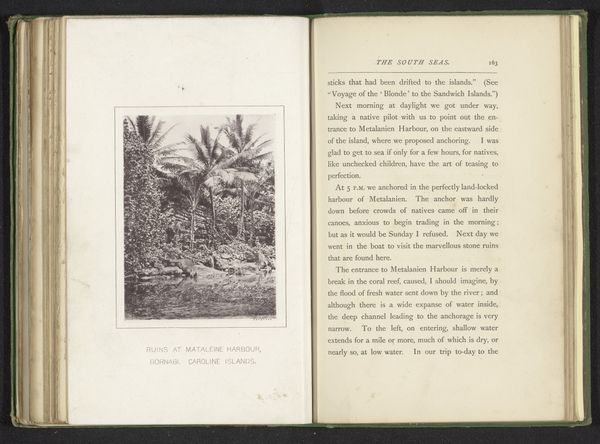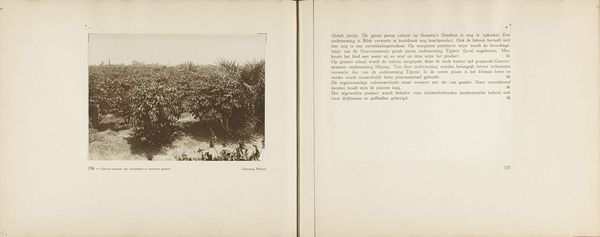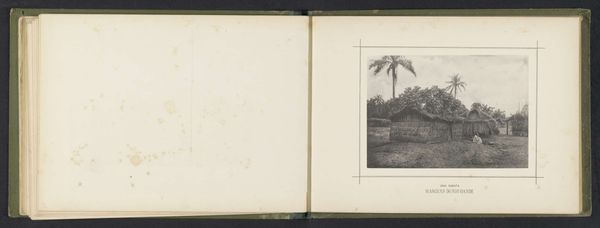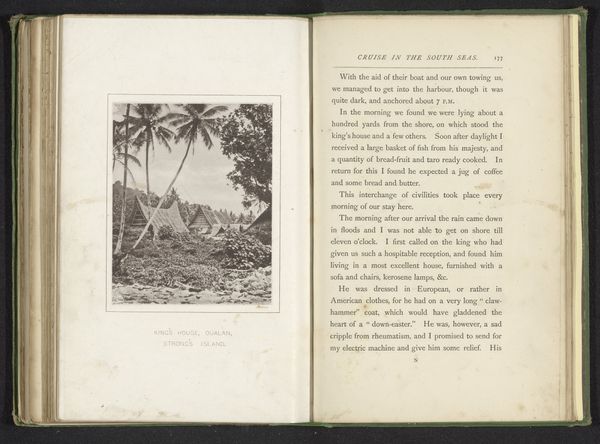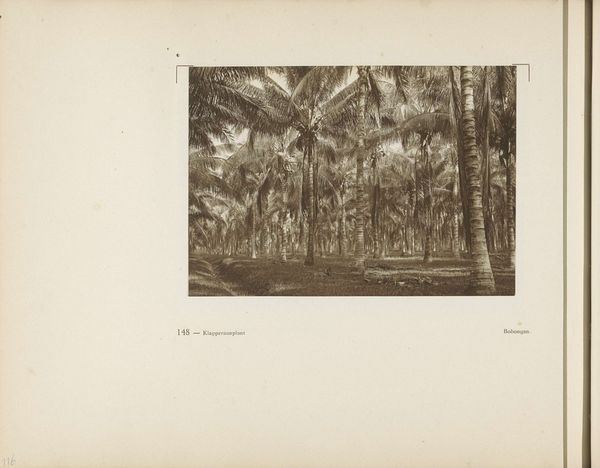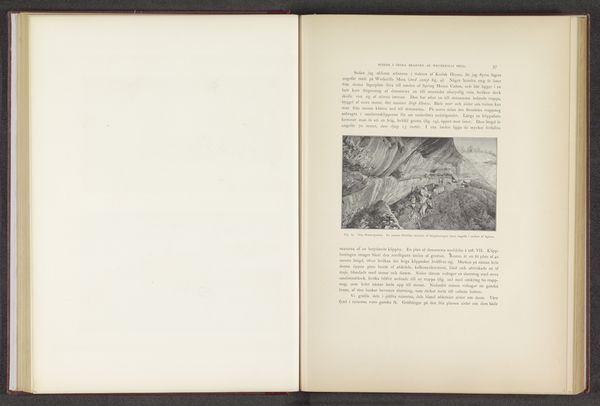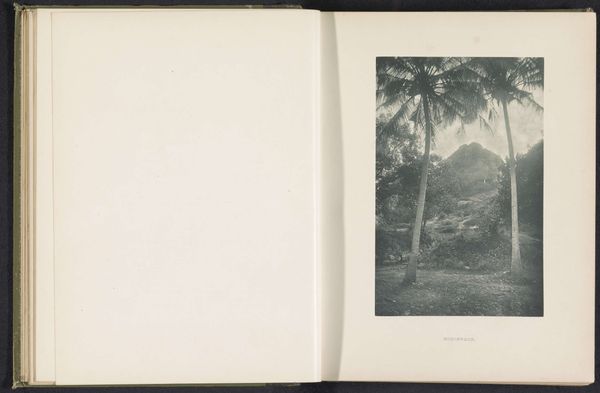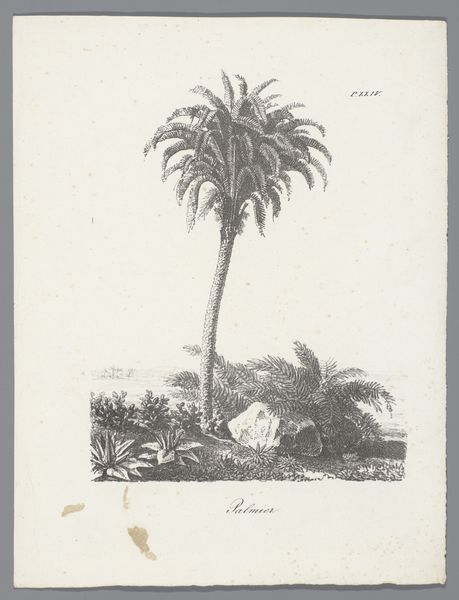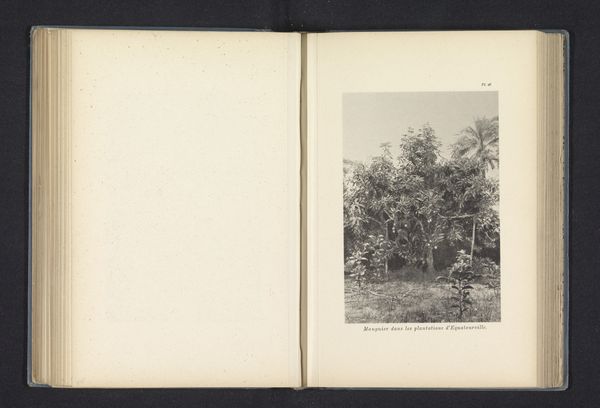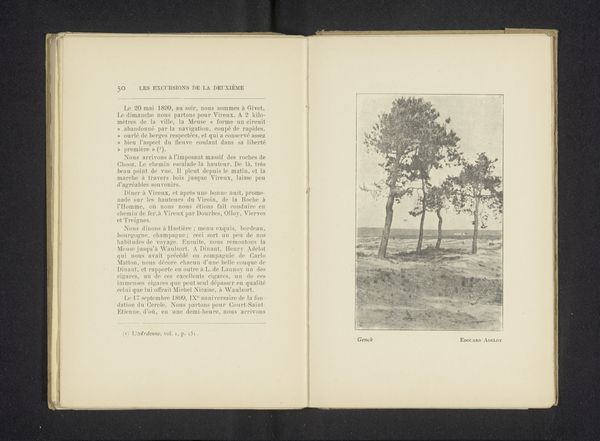
Pagina 146 en 147 van fotoboek van de Algemeene Vereeniging van Rubberplanters ter Oostkust van Sumatra (A.V.R.O.S.) c. 1924 - 1925
0:00
0:00
photography, collotype
#
landscape
#
photography
#
collotype
#
orientalism
Dimensions: height 240 mm, width 310 mm
Copyright: Rijks Museum: Open Domain
Curator: This image, entitled "Pagina 146 en 147 van fotoboek van de Algemeene Vereeniging van Rubberplanters ter Oostkust van Sumatra," or Page 146 and 147 from a photo book of the General Association of Rubber Planters on the East Coast of Sumatra, was created circa 1924-1925. It's currently held in the Rijksmuseum collection. It features a collotype landscape. Editor: Immediately, I'm struck by the almost monochrome, soft gradations of tone, it conveys such stillness, like a study in receding layers and how they create a hazy depth of field. Curator: It’s part of a larger photo book documenting the rubber and coconut plantations in Sumatra, then part of the Dutch East Indies, what is now Indonesia. We see palm trees, which are a potent symbol in Southeast Asian cultures, often associated with fertility and abundance, but here within the context of colonial enterprise. Editor: Yes, it presents a fascinating dichotomy. Formally, the composition utilizes the inherent structure of the trees to lead the eye inwards, toward a central vanishing point, typical landscape conventions that imply ownership, not harmony. I am sensing more dominance than documentation in its composition. Curator: Indeed. Collotypes, used in creating this print, allowed for a large edition size with consistent image quality, fitting the needs for documenting the reach and resources of colonial plantations. So, technically speaking, it's designed to portray efficient cultivation rather than natural splendor. Editor: That’s fascinating. It almost operates like a visual inventory, cataloging the colonial assets rather than revealing an intimate, culturally nuanced portrait. Its texture seems almost incidental, as the intent resides more on the trees' placement than their very qualities of tree-ness. Curator: Considering the association that coconut palm are used to represent hospitality and resilience, it does make the visual story feel incomplete without context. Still, J.W. Meyster successfully invites reflection. Editor: A fitting reflection, for it presents as an enduring meditation of colonial impositions.
Comments
No comments
Be the first to comment and join the conversation on the ultimate creative platform.
